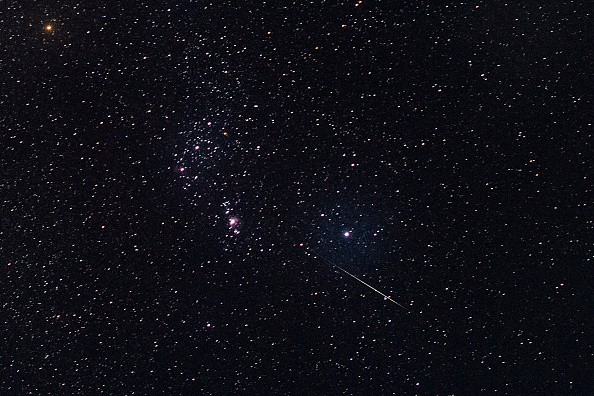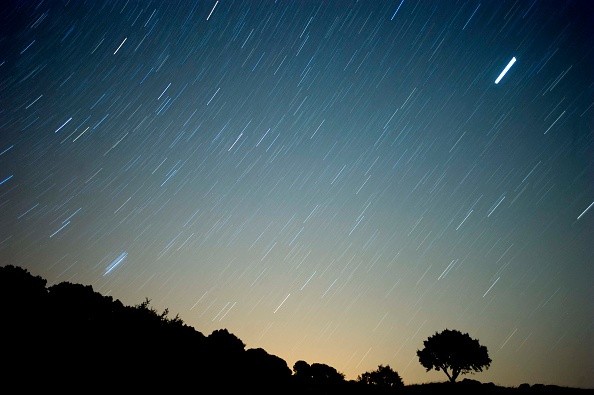Geminid meteor shower will peak on Monday night into Tuesday morning, however, the presence of a celestial object may reduce the viewing opportunity for one of the greatest yearly meteor showers.

Why Are the Geminids Very Popular?
Geminids are renowned because they remain active throughout the night, not only at certain times of the night. Under optimum circumstances, it can produce over 100 meteors per hour, but this year's display will be less spectacular due to the full moon.
In an email to AccuWeather, Robert Lunsford, American Meteor Society (AMS) journal editor said the bright gibbous moon will impair viewing circumstances this year. Although the moon won't be illuminated for the whole night, it's still possible to get a glimpse of it.
Shortly after dusk, meteors will begin streaking across the sky at a pace of 10 to 15 meteors per hour. At this pace, the night will continue to advance.
Hourly costs (about $40) will peak around 2 a.m. local time, according to Lunsford. Even while this is just about half of what might happen under perfect circumstances, the hourly rate is still greater than many other meteor showers all year long, according to Accuweather.
It was also noted by Lunsford that there would be less meteors seen in urban regions compared to rural places
Geminid Meteor Shower Meteors are not limited to the shower's radiant point, which is located in the constellation Gemini. This year's full moon will make it difficult to spot meteors, so it's best to keep it out of the way and look for them in a darker part of the sky.
Also Read : 2021 Orionid Meteor Shower is Nearing its Peak: Here's When and How to View This Celestial Show
Cloud-free Conditions Forecasted For Geminids Peak
The Geminids are also a good time to look for brightly colored meteors in the night sky. There are more colorful meteors to be seen in strong showers like the Geminids and Perseids because there are more meteors throughout the full brightness range, Lunsford said.
The components that make up the meteors are the source of these hues. The many components that make up the meteors produce distinct hues when they burn up in Earth's atmosphere. Even shooting stars with different hues have been seen.
This is the first time since 2014 that cloud-free conditions are forecasted for the peak of the Geminids in much of the eastern United States.
Disruptive clouds plagued most of the mid-December meteor shower's peak every year from 2014 through 2021. Central and southern parts of the United States will also enjoy good conditions Monday night into Tuesday morning.

How to Comfortably Watch the Event
If hazy conditions are predicted for Monday night, skywatchers may take advantage of the Geminids' activity by going outdoors on the preceding or subsequent evenings to get a glimpse of some shooting stars.
Lunsford advises people to bring a blanket and a lounge chair if they plan on seeing the Geminids on any given night. Lunsford also recommends putting in some effort to get the finest view possible.
Two further meteor showers will occur after the Geminids, before a meteor shower drought sets in. This modest meteor shower will not peak until late April, over four months after the Ursids and Quadrantids.
Related Article : How to Look for the Northern Taurid Meteor Shower
For more more news, updates about meteor showers and similar topics don't forget to follow Nature World News!
© 2025 NatureWorldNews.com All rights reserved. Do not reproduce without permission.





